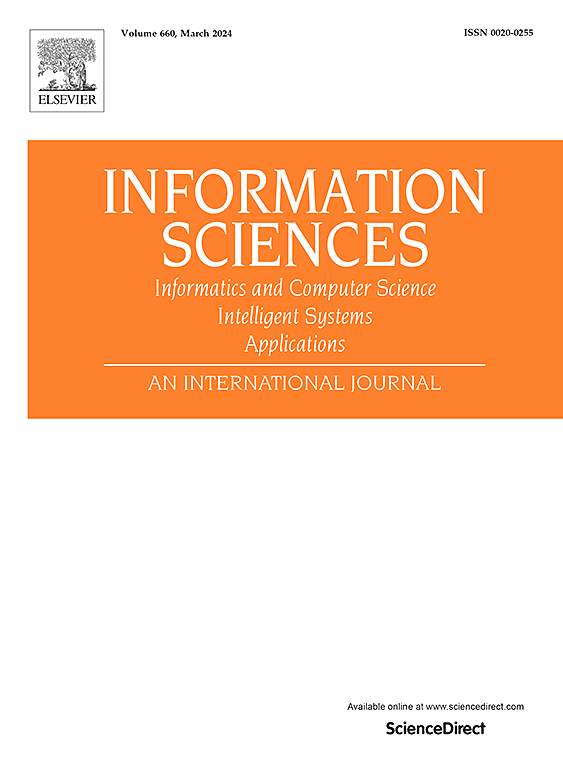A multi-modal unsupervised machine learning approach for biomedical signal processing during cardiopulmonary resuscitation
IF 8.1
1区 计算机科学
0 COMPUTER SCIENCE, INFORMATION SYSTEMS
引用次数: 0
Abstract
Cardiopulmonary resuscitation (CPR) is a critical, life-saving intervention aimed at restoring blood circulation and breathing in individuals experiencing cardiac arrest or respiratory failure. Accurate and real-time analysis of biomedical signals during CPR is essential for monitoring and decision-making, from the pre-hospital stage to the intensive care unit (ICU). However, CPR signals are often corrupted by noise and artifacts, making precise interpretation challenging. Traditional denoising methods, such as filters, struggle to adapt to the varying and complex noise patterns present in CPR signals. Given the high-stakes nature of CPR, where rapid and accurate responses can determine survival, there is a pressing need for more robust and adaptive denoising techniques. In this context, an unsupervised machine learning (ML) methodology is particularly valuable, as it removes the dependence on labeled data, which can be scarce or impractical in emergency scenarios. This paper introduces a novel unsupervised ML approach for denoising CPR signals using a multi-modality framework, which leverages multiple signal sources to enhance the denoising process. The proposed approach not only improves noise reduction and signal fidelity but also preserves critical inter-signal correlations (0.9993) which is crucial for downstream tasks. Furthermore, it outperforms existing methods in an unsupervised context in terms of signal-to-noise ratio (SNR) and peak signal-to-noise ratio (PSNR), making it highly effective for real-time applications. The integration of multi-modality further enhances the system's adaptability to various biomedical signals beyond CPR, improving both automated CPR systems and clinical decision-making.
心肺复苏过程中生物医学信号处理的多模态无监督机器学习方法
心肺复苏(CPR)是一项关键的挽救生命的干预措施,旨在恢复心脏骤停或呼吸衰竭患者的血液循环和呼吸。从院前阶段到重症监护病房(ICU),对心肺复苏过程中生物医学信号的准确和实时分析对于监测和决策至关重要。然而,心肺复苏术信号经常受到噪声和人为因素的干扰,这使得精确的解释变得困难。传统的去噪方法,如滤波器,难以适应心肺复苏信号中存在的变化和复杂的噪声模式。鉴于心肺复苏术的高风险性质,快速和准确的反应可以决定患者的生存,因此迫切需要更强大和自适应的去噪技术。在这种情况下,无监督机器学习(ML)方法特别有价值,因为它消除了对标记数据的依赖,而标记数据在紧急情况下可能是稀缺的或不切实际的。本文介绍了一种新的无监督机器学习方法,用于使用多模态框架对CPR信号进行去噪,该方法利用多个信号源来增强去噪过程。所提出的方法不仅提高了降噪和信号保真度,而且保留了对下游任务至关重要的关键信号间相关性(0.9993)。此外,在无监督环境下,它在信噪比(SNR)和峰值信噪比(PSNR)方面优于现有方法,使其在实时应用中非常有效。多模态的融合进一步增强了系统对心肺复苏术以外各种生物医学信号的适应性,提高了心肺复苏术自动化系统和临床决策水平。
本文章由计算机程序翻译,如有差异,请以英文原文为准。
求助全文
约1分钟内获得全文
求助全文
来源期刊

Information Sciences
工程技术-计算机:信息系统
CiteScore
14.00
自引率
17.30%
发文量
1322
审稿时长
10.4 months
期刊介绍:
Informatics and Computer Science Intelligent Systems Applications is an esteemed international journal that focuses on publishing original and creative research findings in the field of information sciences. We also feature a limited number of timely tutorial and surveying contributions.
Our journal aims to cater to a diverse audience, including researchers, developers, managers, strategic planners, graduate students, and anyone interested in staying up-to-date with cutting-edge research in information science, knowledge engineering, and intelligent systems. While readers are expected to share a common interest in information science, they come from varying backgrounds such as engineering, mathematics, statistics, physics, computer science, cell biology, molecular biology, management science, cognitive science, neurobiology, behavioral sciences, and biochemistry.
 求助内容:
求助内容: 应助结果提醒方式:
应助结果提醒方式:


